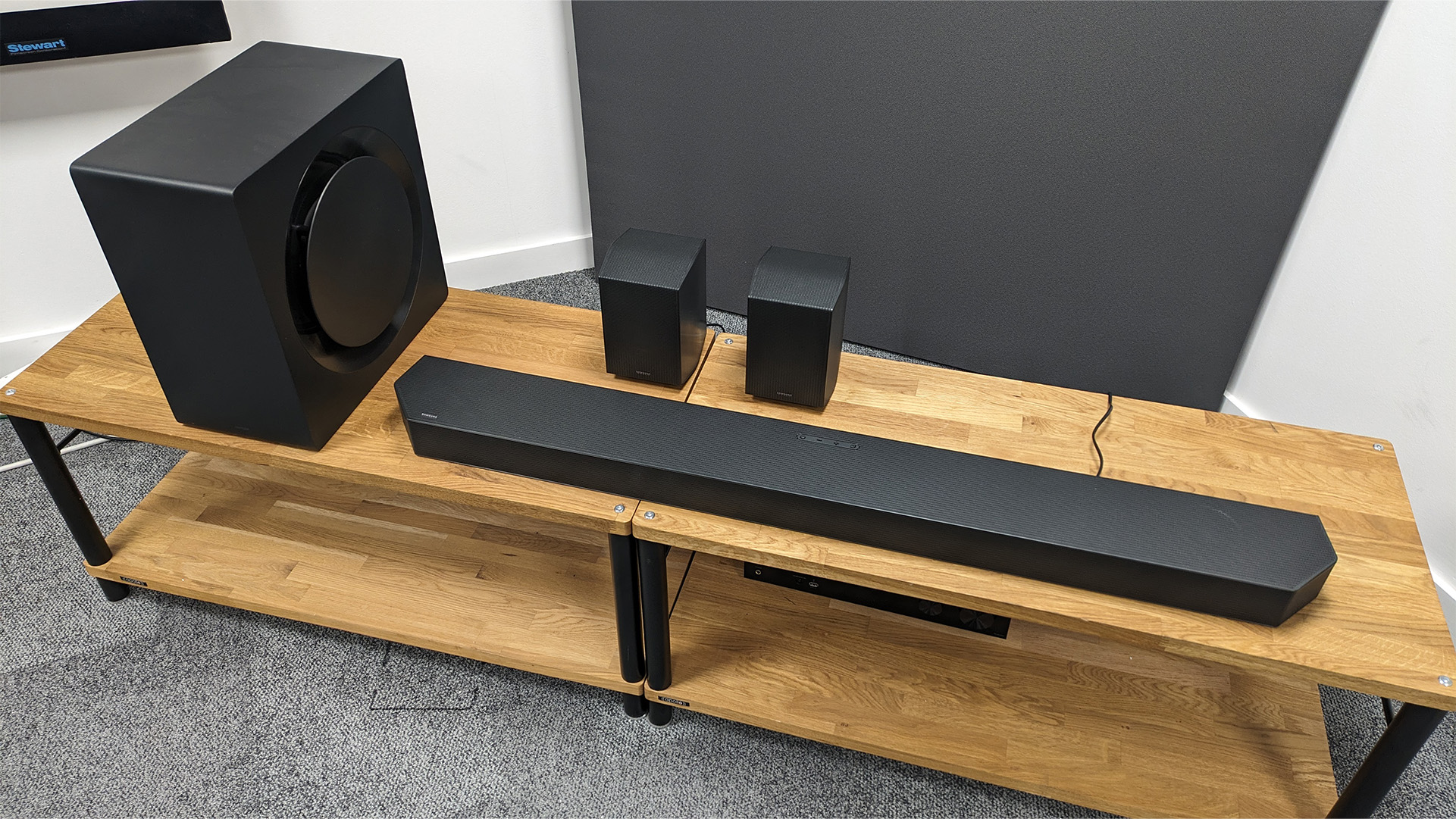
In an ideal world, a full-fat AVR and surround system would be the obvious way to enhance your TV’s audio for movies and TV shows. Let’s be realistic, though – many of us don’t have the space to accommodate this or even the desire to entertain the idea.
This is partly why alternative solutions such as soundbars have become so popular. However, even a decent soundbar can often benefit from a little support. Sure, many standalone bars produce impressive Dolby Atmos audio but they can’t compete with genuine surround sound coming at you from all angles.
Enter the Q990C, a soundbar joined by a pair of wireless surround speakers and a wireless subwoofer ready to lend a helping hand.
Price
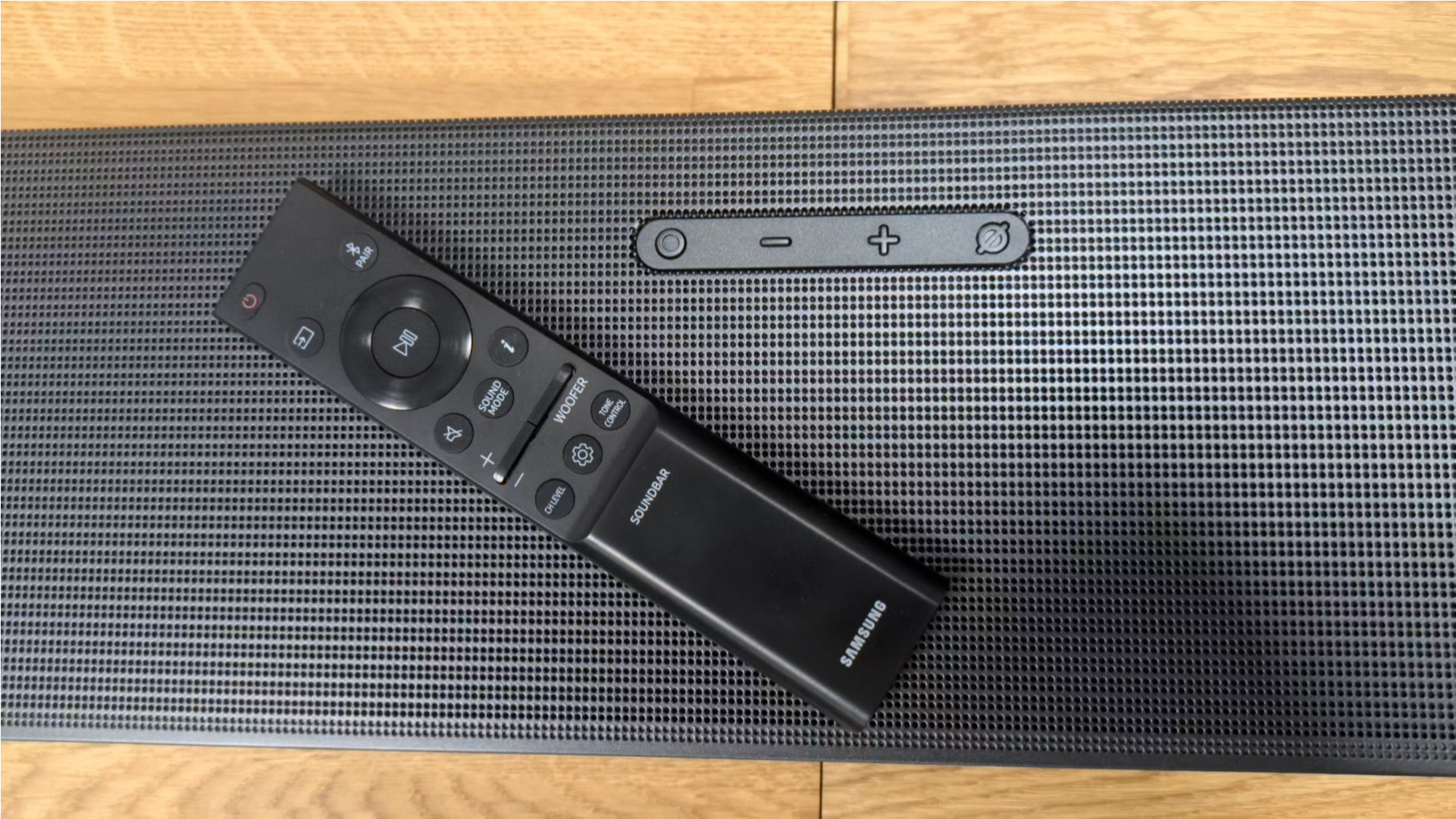
The Samsung Q990C currently costs £1399 / $1399 / AU$1499. This puts the package up against standalone soundbars such as the Sennheiser Ambeo Soundbar Plus (£1299 / £1499 / AU$2159) and Sony HT-A7000 (£1199 / $1199 / AU$1599). These bars are of course very different propositions to this Samsung bundle as they don’t come with surrounds or a subwoofer, but both bars received five-star reviews from us, while the Sony is also an Award-winner.
The Sonos Arc soundbar (£799 / $899 / AU$1344) paired with a couple of surrounds, such as the Sonos Era 100 (£448 / $469 / AU$758 per pair), would come in just shy of the Q990C’s price tag, but adding a subwoofer such as the Sonos Sub Mini (£430 / $430 / AU$649) would tip the Sonos system to the more expensive side.
Design
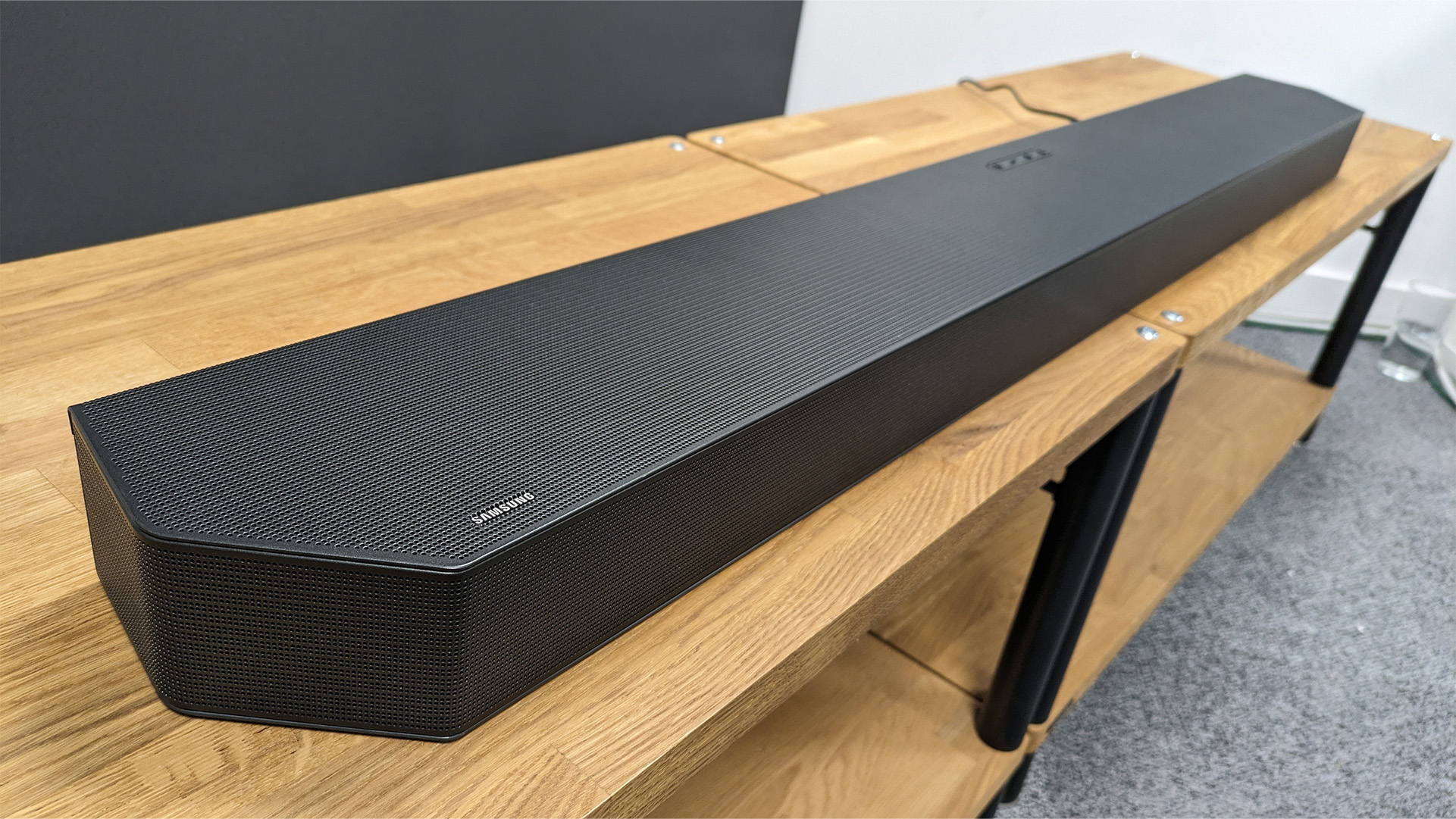
The large soundbar included in the Samsung Q990C package measures 123cm in width and sports a blocky, angular design. Weighing just short of 8kg, it’s a fairly heavy unit, feeling well-built and solid. Behind the front grille of the bar, you’ll find the centre, left, and right channels, each of which consists of a 110 x 52mm racetrack driver and a 52mm tweeter. On each end of the bar, you’ll find ‘side’ and ‘wide’ drivers – these are full-range drivers that work in tandem with the surrounds to fill the physical space between the units with sound. Finishing off the soundbar’s drivers are 50mm full-range up-firing drivers, one on either end.

Connectivity HDMI out (eARC), 2 x HDMI in, optical, wi-fi, Bluetooth 5.0, AirPlay 2
Format support Dolby Atmos, Dolby TrueHD, Dolby Digital Plus, DTS:X
Streaming Spotify Connect, Amazon Music, Deezer
Voice control Amazon Alexa
Soundbar dimensions (hwd) 6.9 x 123 x 14 cm
Soundbar weight 7.7kg
Surround speaker dimensions (hwd) 20 x 13 x 14 cm
Surround speaker weight 3.4kg
Subwoofer dimensions (hwd) 41 x 22 x 41 cm
Subwoofer weight 11.7kg
The subwoofer houses a 20cm driver and weighs 11.7kg. At 41cm in height and depth, and 22cm in width, it’s not enormous and so isn’t a nightmare to move. While subs aren’t usually picky about position, we would recommend placing it close to the soundbar to help integration.
The surround speakers are pretty compact but still feel robust and solid just like the bar. Each surround speaker features three 52mm drivers: one up-firing driver, one facing towards the listener, and the third on the side of the speaker closest to the TV. Typically, rear surround speakers such as these will need wall-mounting, so if you’re not planning to do this then you’ll need to buy a pair of stands. Overall set-up is easy, but it would be nice if the power cables supplied with the product were longer. At 1m, they prove quite limiting in where you can position the speakers and you need to have mains sockets for all four parts of the system.
On the back of the soundbar, you’ll find three HDMI ports, with one of those handling eARC duties. There is also an optical input, handy in case your TV doesn’t feature newer ARC/eARC capabilities.
Features
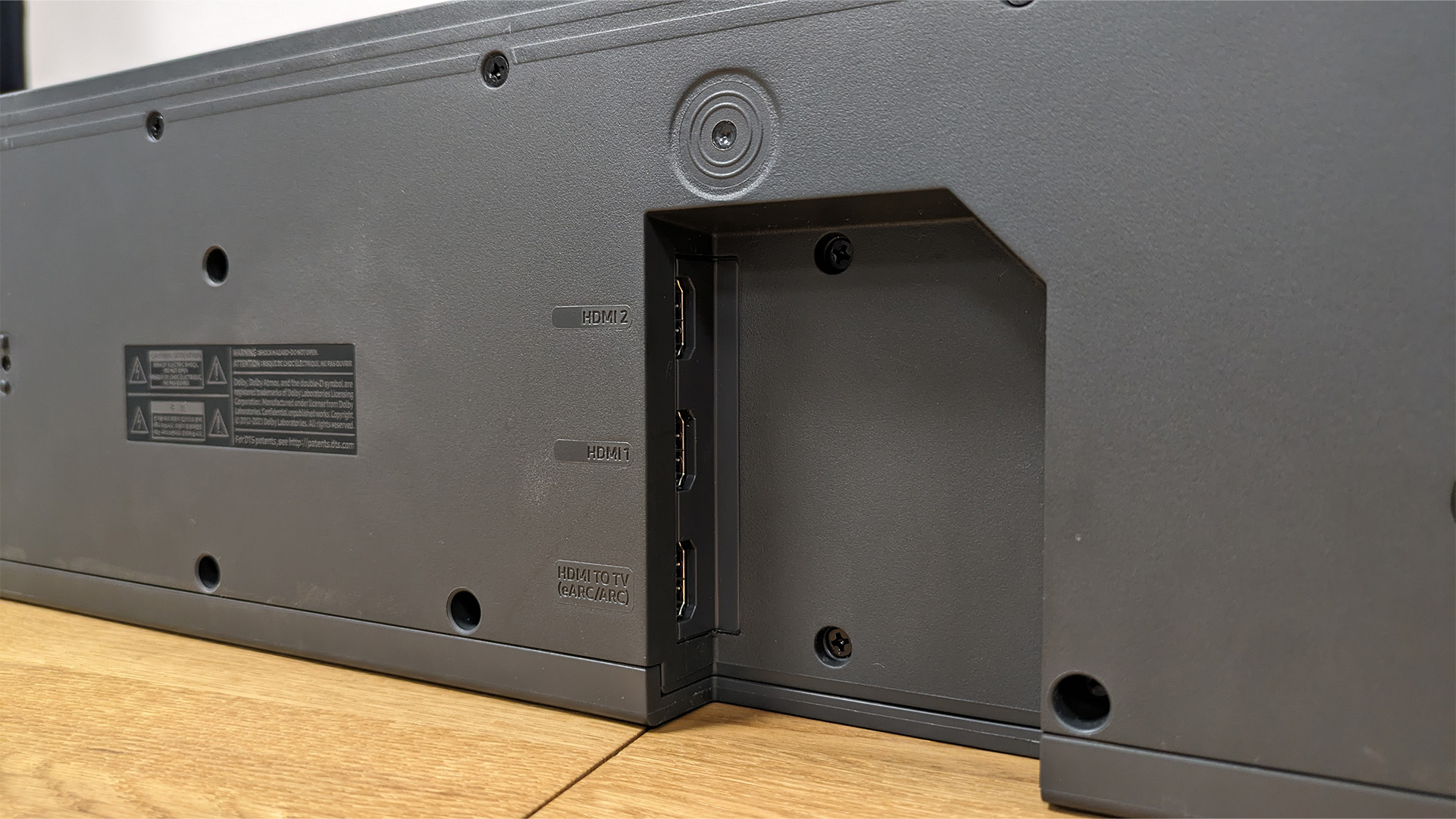
The Q990C bundle is enjoyably quick and simple to set up. Each component links up wirelessly and everything is ready to go within seconds of plugging in. No tinkering or fuss at all. Simply connect the power cords to the pair of surrounds, the sub and the main soundbar. Then, turn the soundbar on et voilà, everything should be good to go. Only the soundbar features an on/off switch, while the surrounds and sub power up when connected to an active mains socket. A successful connection is indicated by a blue ‘LINK’ LED on the rear of the surrounds and the subwoofer.
The package comes with a remote that is slim and compact but offers quite a lot of functionality. There’s a main volume control as well as a separate subwoofer volume control, which is useful if you need to tame some unwieldy low-end at a moment’s notice.
There are also controls on the remote for switching between sound modes: Standard (which outputs the original sound), Surround (which aims to widen the soundfield), Game Pro (designed to make the on-screen action more immersive), and Adaptive Sound (which analyses what’s being played and optimises the soundfield based on the audio’s characteristics). Alongside these options, you can also change tonality and adjust the individual channel level settings.
The soundbar features a display but it can only show three characters at once, so it can take a while to display the name of a setting, or scroll through options and adjust quickly. Like many soundbars, the real functionality lies within the app. In this case, it’s Samsung’s SmartThings app, which can be used to control a wide range of different smart devices, including the Q990C.
Rounding off the main features, there’s SpaceFit Sound Pro. This handy feature uses the soundbar’s built-in microphone to analyse the acoustics of your room to improve the tonal balance of the system. With this setting turned off, the sound is more narrow and the rear surrounds aren’t as present. When engaged, the sound is more three-dimensional and spacious, spreading around our test room – exactly what you want from a surround system.
Sound
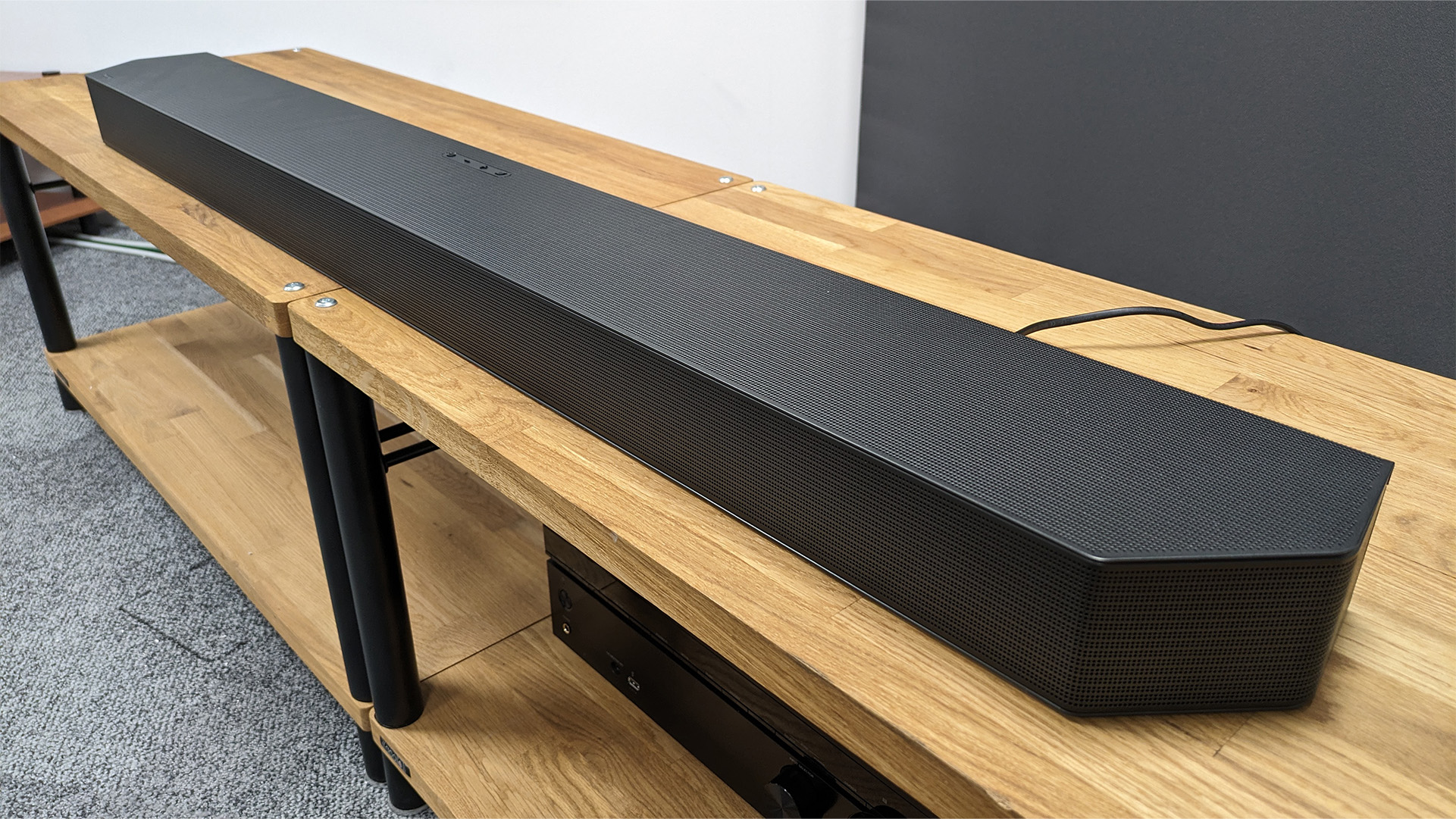
The Samsung package presents audio with a good sense of immersion, precision, and height. The soundbar and subwoofer combine well with the surrounds, providing a seamless sound with no sonic gaps. The sub adds a weighty extended low-end that is cohesive with the rest of the audio while still delivering impact. Subs in other packages can often feel detached and separate from the rest of what is going on, and we’re pleased that this isn’t the case here.
It all comes together to fill space with expansive sound, and the system manages to go loud while staying refined, producing an overall easy-going sound that doesn’t annoy you in any way. Movie soundtracks and dialogue sound smooth and the system does a good job of not distracting from what’s on screen.
That said, the audio in certain scenes is gentler than that produced by some rivals. A classic example is in Interstellar as the crew explores the watery Miller’s planet. The rumble of the spacecraft as it enters the planet’s atmosphere, and the panic in Matthew McConaughey’s voice as he desperately calls the crew back to the ship are two notable contributors to the emotion in the scene. These feelings are somewhat subdued with the Samsung, we don’t quite feel the level of panic that we should, and the rumbles of the ship sound a bit soft.
Changing audio modes has a dramatic impact on how music sounds. In Standard Mode, the system performs well, the music is powerful and feels balanced across the different speakers. When we switch to Surround Mode, each sonic element feels widened and less precise. Listening to Violence by Grimes, each electronic instrument is spread out from its original spot in the soundstage. As a result, they bleed into one another, which reduces their clarity and precision.
Switching to Adaptive Sound Mode, which optimises the soundfield based on the traits of the audio being played, we still retain the width and space provided by Surround Mode. However, the focus of each sound is restored, taming the surround speakers and placing the bulk of the workload back on the soundbar. Vocals become more pronounced and easier to decipher while the core elements of the track unite in the centre of the soundstage.
While the soundbar in this Samsung package isn’t sold separately, we gave it a try on its own to see how it fared. It does a decent job, sounding large and solid, though it definitely misses the support of the surrounds and sub to fill out the room. Other standalone bars, such as the Sonos Arc, manage to convey music with a touch more finesse and detail, but the Samsung bar is still really enjoyable and the accompanying surround speakers and subwoofer bring the whole thing to life.
Verdict
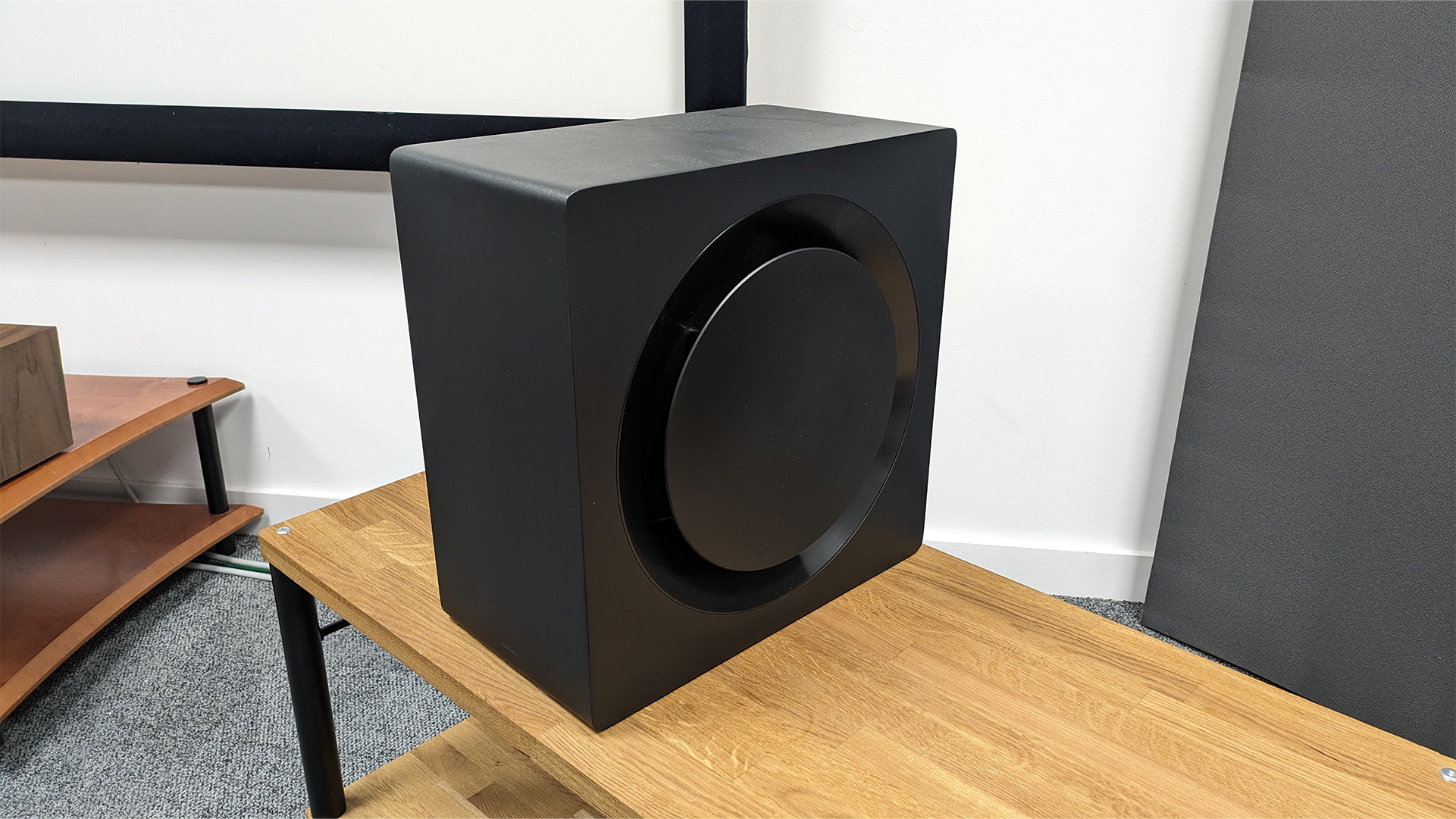
Overall, the Q990C is a capable system, comprising well-built components that are quick and easy to set up. It’s not flawless, but if you’re looking for a relaxed, smooth sound, there’s a lot to enjoy here and it’s the best soundbar package we’ve heard from Samsung in recent years.
SCORES
- Sound 4
- Build 5
- Features 4
MORE:
Read our review of the Sonos Arc
Also consider the Sennheiser Ambeo Soundbar Plus
Read our Sony HT-7000A review
Best soundbars: options for every budget, recommended by our experts







